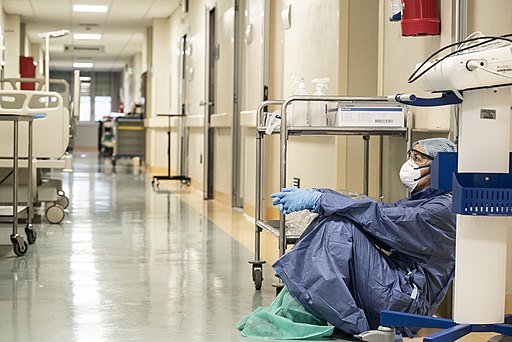
By Pamela Cruz/ P360P / Cultural Circle House
The U.S. has become one of the countries with the highest number of doses of any of the COVID-19 vaccines administered, which has allowed many cities and entire states to recently remove most of the restrictions that prevent the spread of the virus.
Although the strong vaccination campaign has shown good results, with a considerable decrease of positive cases in the country, some localities show considerable cases of contagion, and some of these people end up hospitalized due to life-threatening complications of the disease.
But there is one point that the vast majority of people hospitalized for COVID-19 share: they are not vaccinated.
And, according to hospital data compiled last week by the Department of Health and Human Services, as well as vaccination rates released by the Centers for Disease Control and Prevention ?CDC? hospitals in states with lower vaccination rates tend to have more patients with COVID-19 in intensive care units.
According to a recent USA Today article, Dr. Mark Sannes, an infectious disease physician and senior medical director of the HealthPartners system in Minnesota, which operates nine hospitals and more than 55 clinics, noted that the system has experienced a "precipitous decline" in hospitalizations for COVID-19. But now, nearly all of the inpatients he sees are unvaccinated.
"Less than 1.0 percent of our hospitalized COVID patients are vaccinated," he said.
In Ohio, at University Hospitals Cleveland Medical Center, only 2.0 percent of COVID-19 patients admitted in the past month were vaccinated, Dr. Robert Salata, the hospital's physician-in-chief, told the newspaper.
It also details that spokeswoman for Sanford Health, which operates 44 medical centers and more than 200 clinics in the Dakotas, Minnesota and Iowa, Angela Dejene, less than 5.0 percent of the 1,456 patients admitted with COVID-19 so far this year were fully vaccinated.
The publication revealed that Wyoming, Missouri, Arkansas and Idaho currently have the highest percentage of COVID-19 patients on average in their Intensive Care Units (ICUs); and, coincidentally, all of those states have vaccinated less than 40 percent of their population.
As of June 15, San Mateo County had a cumulative 42,274 positive cases of COVID-19, of which 581 died due to complications from the disease. Four people remain hospitalized.
The age factor in COVID-19 hospitalized patients
USA Today noted that medical centers report that there is also an obvious shift in the age of their sickest patients, with older people much more likely to be vaccinated than younger people.
"We're all seeing the same thing: when someone gets sick and comes to the hospital, they're much more likely to be young and unvaccinated," Dr. Robert Wachter, professor and chair of the Department of Medicine at the University of California, San Francisco, told the newspaper.
The situation does not appear to be the work of just a few states, but extends across the American union, as Cathy Bennett, president and CEO of the New Jersey Hospital Association, said that unlike last spring, when those 65 and older accounted for the majority of hospitalizations, "we are now seeing more young people hospitalized with COVID."
In New Jersey, the percentage of COVID-19 hospitalizations among 18- to 29-year-olds has increased 58 percent since the beginning of the year. In comparison, the percentage of COVID-19 hospitalizations among the 65 and older age group, with a statewide vaccination rate of more than 80 percent, decreased 31.2 percent.
Vaccination: the great challenge
The article highlights that the physicians interviewed agree that there are several reasons why people are still not vaccinated, ranging from hesitation, to anti-government or anti-science sentiments, to misinformation and various fears.
For many, access to vaccination is not easy, either because there is no immunization center nearby, they don't have time to spare, or getting there is simply complicated.
Dr. Gerald Maloney, chief medical and service officer at Geisinger Health Network, which operates nine hospitals in Pennsylvania, said much work remains to be done to build the confidence needed for these groups to adopt vaccination.
For children 11 years of age and younger, who cannot yet receive the vaccine, having their family members immunized keeps them out of the hospital and protects them against multisystem inflammatory syndrome, a rare but dangerous side effect of COVID-19 in children.
"Most of the children we're seeing hospitalized with COVID-19 or MIS-C had COVID in their home, maybe a parent or grandparent, and most of those people had not been vaccinated," said Dr. Michael Bigham, a pediatric intensivist in the intensive care unit at Akron Children's Hospital in Ohio.
You may be interested in: Pfizer and AztraZeneca Vaccines Protect Against Delta Variant of COVID-19


